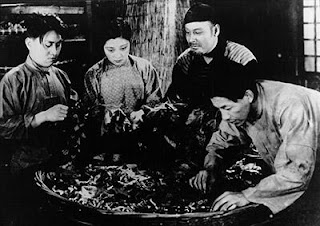Film History and Application: Chinese Film
As part of my Film History and Application course this year, we have recently begun to study various international films in order to better understand different cultures, religions, and existing tensions. We have watched multiple films originating from China and a couple from India and plan to move onto Brazil and other countries. It was extremely interesting to learn about the film industry in different countries and how their individual history affects the types of films that are produced and allowed to be screened. For example, there are six main “generations” of film from China: the Leftist Movement, the Japanese Occupation (WWII), the Second Golden Age, the Early Communist Era, the Cultural Revolution, and the 5th Generation. The films produced prior to the Leftist Movement were heavily influenced by western ideals as it was the west that introduced the film to China. This, in turn, leads to the creation of the Leftist Movement also known as the first Golden Age, as it was the first time that Chinese culture was truly added into their films. The main focus of these films was class struggles, external threats, and an emphasis on the common people. This changed dramatically as China was occupied by Japan during WWII. The film studios were taken over by the government and film became very restricted and controlled. During the Second Golden Age, the film was back in the control of the Chinese and the focus was shifted from war stories to post-war struggles and other dramatic genres including romance and comedy films. Once again the Chinese film industry was changed dramatically as communism rose. The industry was once again heavily controlled and produced mass amounts of propaganda and very few films dedicated to entertaining or appealing to the public’s desires. As the Cultural Revolution occurred film was even more restricted causing the interest in films to diminish even further. After the Cultural Revolution, it was difficult for filmmakers to attract attention and popularity because there was such a widespread stigma that the films were regulated and controlled. This changed in the 5th Generation and filmmakers regained some of their freedom. Now China is currently in its 6th generation with a focus on promoting its films internationally and sharing their ideas and cultures. At the same time as all of these changes and shifts occurred in the Chinese film industry, the film industry of Hong Kong was stable and produced many different films. These films were all a lot more westernized in comparison to the rest of the country as Hong Kong was a British Colony. As a class, we look forward to watching our next Indian film and discover more about the history of their industry and the many different ways they affect or are affected by our industry.



Comments
Post a Comment